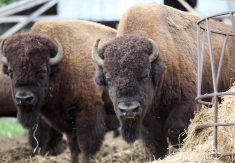The idea that large hog (barns) or other large livestock operations should be confined to class five, six or seven undeveloped land, as suggested in C. F. Bentley’s letter Aug. 31, isn’t practical for a number of reasons.
First, that isn’t land where large amounts of animal waste can be spread to nourish a heavy uptake of nutrients.
Rough terrain, stony land or small bogs and swamps, as well as tree growth, would prevent land application at agronomic rates.
As a dumping ground, it might be fine, for there would be few neighbors around to complain. But marginal land is frequently porous and at a higher elevation, or a pocket area, ground water pollution can threaten far-removed drinking water sources.
Read Also

High prices see cow-calf producers rushing to incorporate
Farm accountants are reporting a steady stream of cow-calf producers rushing to get their operations incorporated ahead of selling their calves this fall.
Many people are still trying to fix the unfixable – the whole concept and design of the mega hog barns.
Designers hate to acknowledge that some concept is fundamentally flawed but the list of basic problems grows; everything from the unhealthy atmosphere in the barns that affects workers and hogs to the costs and difficulties of getting rid of a few million gallons of liquid hog waste on land adjacent to the barns.
Disposal costs skyrocket if the liquid waste cannot be applied within a three-mile radius of the barn. However, recent information from other land areas now reports increasing and poisonous levels of phosphorus building up in the soils where the repeated applications have been made.
How is that to be fixed?
– Ellen Francis,
Silver, Man.














